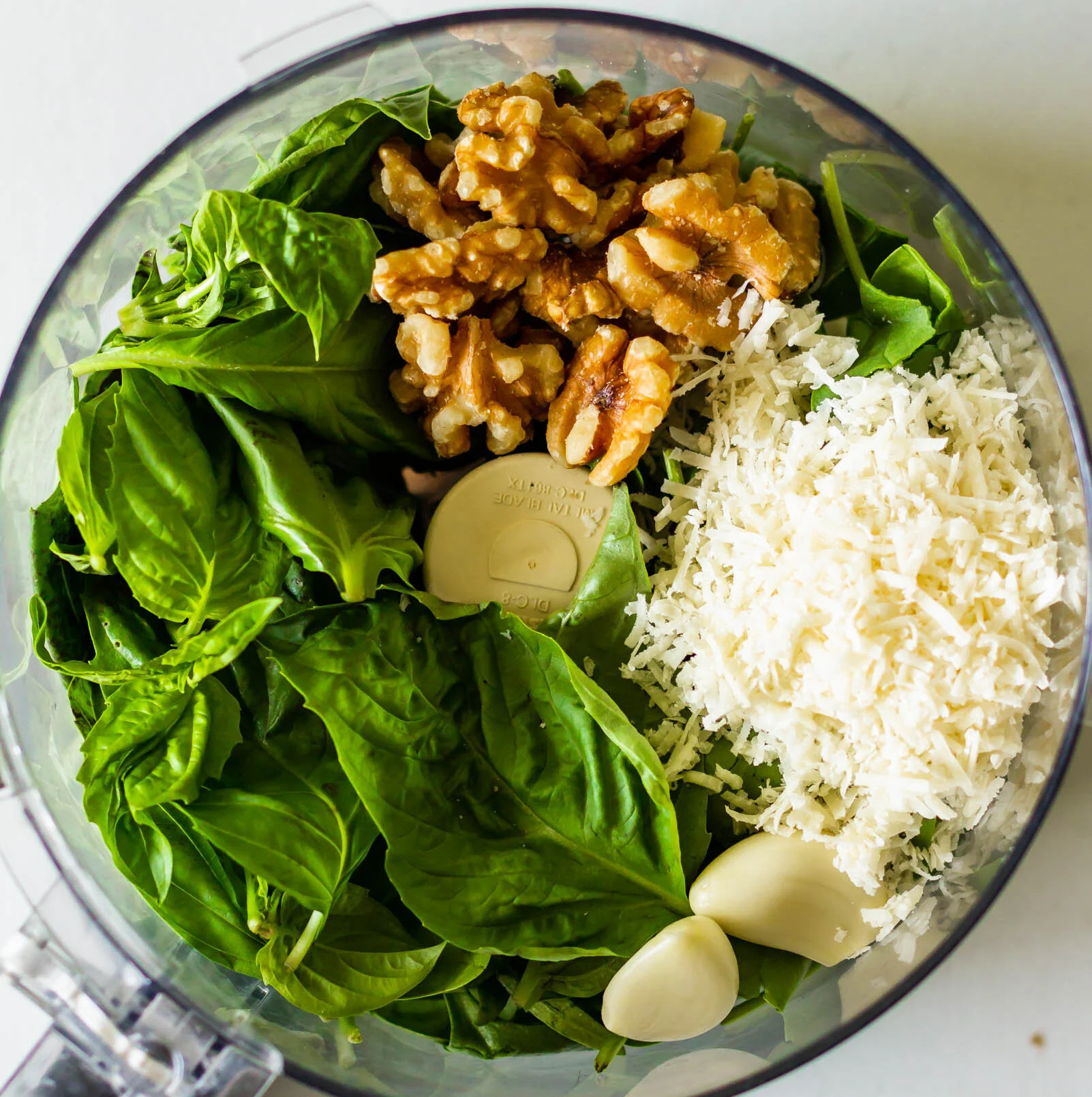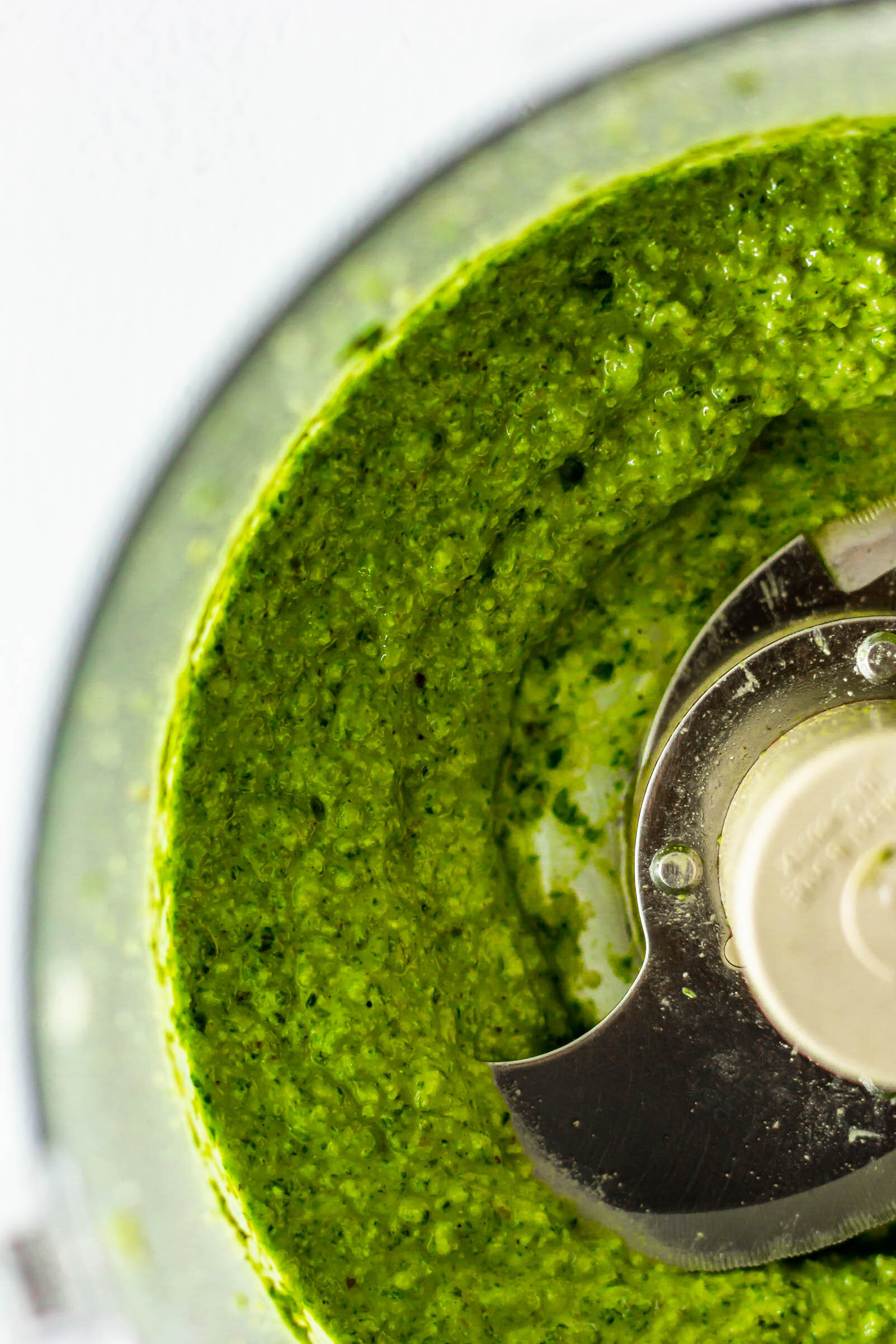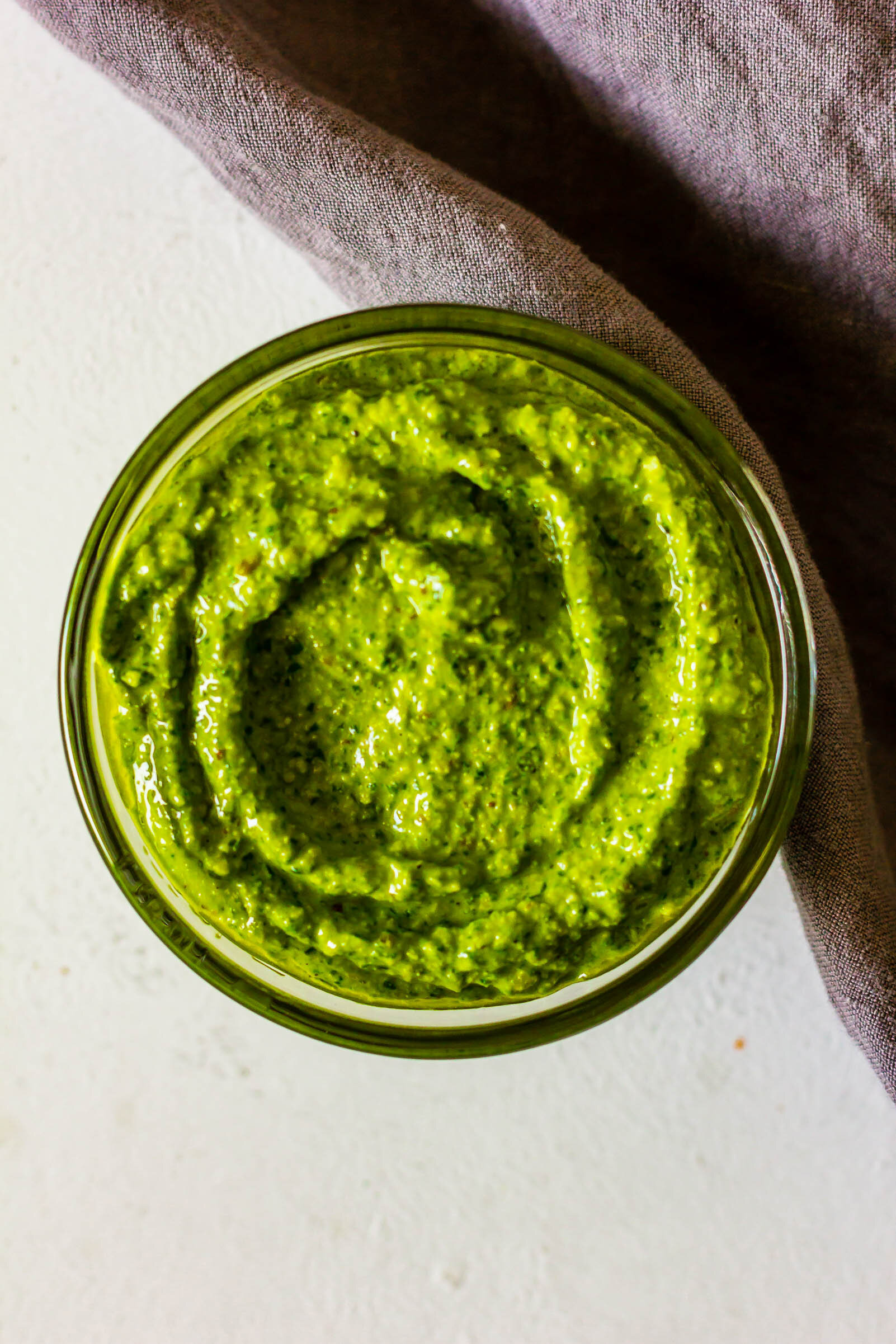Pesto-Filled Challah Snails
/Last fall, I started making challah on a bi-weekly basis. I tried different recipes, different seed toppings, an array of fillings all in the name of recipe development. We had a continual rotation of challah in the freezer, which I quickly learned is a fantastic hosting move. You never know when a guest or friend is going to drop in and having fresh challah on hand is always a win. I tried challah recipes with honey and sugar, debated the differences between olive oil and neutral oil (both are great) and practiced every type of challah braiding technique I could find on the internet. After months of testing, I’ve finally perfected my own challah recipe and I’m sharing it with you, along with a very versatile pesto filling and some shaping ideas today.
First, let’s talk about challah. Challah is an bread, enriched with fat, sugar, and lots of eggs. It’s similar to a brioche in ingredients and categorization, but leans a little more toward the savory side. Challah bread is synonymous with Jewish culture and cuisine and is often eaten as part of special celebrations or rituals. (Once, while at the restaurant, we made a big, giant challah loaf for a 200 person wedding. It was very impressive.) Because the dough is so smooth and easy to work with, it lends itself well to fun shaping and braiding. You can use challah dough for pretty much anything you want, you can make and bake a batch in one day (no overnight proofing needed), and you can fill it and top it with whatever your heart desires.
Now, let’s move on to pesto. For me, making pesto is a personal experience and should not be made with a recipe. It’s more intuitive than scripted and really it should be made with anything and everything that you have on hand. So instead of providing you with a very specific pesto prescription, I’m going to give you some general guidelines so that you are able to make a great pesto to suit any mood.
I normally follow this idea when pesto-ing:
-about 4 cups of greens (4 large handfuls)—I use spinach, kale, arugula, basil, parsley…anything goes! For a more traditional pesto, try to use basil leaves as half of your green count. For this particular batch, I used half basil and half spinach.
-1-2 garlic cloves
-about 1/4 cup (a small handful) of nuts— pine nuts are traditional and make for a creamier pesto. Walnuts are my favorite, but you can use any nut that you have on hand. Kale and walnuts are the most popular pesto combination in our house.
-about 1/4 cup (another small handful) of freshly grated parmesan cheese
-lemon juice—either half of a large lemon, or a whole small lemon
-salt and pepper
*Combine all of this in a food processor, pulsing until everything is broken down and a paste begins to form. With the food processor running, slowly stream in olive oil until the paste begins to loosen into a sauce. The consistency is up to you, but I usually use between 1/4-1/2 cup of olive oil. Taste and adjust by adding more salt, pepper, lemon juice.
My Favorite Challah
Yield: 2 loaves
Ingredients:
400 g (3 cups) all purpose flour
280 g (2 cups) bread flour
285 g (1 1/4 cups) warm water
2 tsp active dry yeast
2 whole eggs
1 egg yolk
110 g (1/3 cup) honey
90 g (1/2 cup) oil, like avocado*
1 tbsp kosher salt
more flour for dusting
one egg, for egg wash
optional: flaky salt, za’atar, poppy seeds, everything but the bagel seasoning, for topping
Procedure:
In a large mixing bowl, combine 1/2 cup water and yeast. Stir and let rest for about 5 minutes, until foamy.
When yeast is ready, add eggs, egg yolks, honey, oil, and the rest of the water. Whisk to combine.
Add all purpose flour, bread flour, and salt to the bowl and use a wooden spoon or a rubber spatula to stir until all of the flour has been moistened and a shaggy dough begins to form.
Turn dough onto lightly floured work surface and then sprinkle the top of the dough with a little more flour. Knead dough on the countertop for 3-5 minutes, until smooth and the dough passes the window pane test.
Wipe a small amount of oil around a large bowl. Place the dough into the bowl, cover with plastic wrap and let proof for 1-1 1/2 hours, until the dough is doubled in size.
When proofed, punch the dough down and turn onto a lightly floured work surface. Use a bench scraper and a kitchen scale to divide the dough into eight equal pieces. Shape dough into small rounds, cover with plastic wrap and let rest for 20 minutes.
Shape each dough round into a rope, about 8” in length. You should now have eight ropes, four for each challah loaf.
These are the instructions for shaping a four-strand challah braid. If you want to do a three or five strand braid, just divide your dough into the appropriate number of pieces. Shape the challah loaves: I started to type out all of the steps for braiding, but I find that it is SO MUCH EASIER to watch a video that shows exactly where each strand should go. Here’s a great one that I’ve used often.
Place braided challah loaves on a parchment lined baking sheet. Cover with plastic wrap and let rise for another 30-45 minutes.
When there is 10 minutes left in the final proofing time, preheat the oven to 375°F. Brush the tops of the challah with egg wash and sprinkle with salt, poppy seeds, za’atar, etc.
Bake for 20 minutes, rotate the pans, and bake for another 15 minutes until challah is deeply golden brown.
Pesto Challah Snails
Yield: 3 large snails
Ingredients:
1 batch challah dough, recipe above
1 cup fresh pesto
egg wash, for brushing
grated parmesan cheese, optional
Procedure:
Follow challah steps #1-5 in the recipe above.
After the bulk proof, turn the challah dough out onto a lightly-floured work surface and divide into three equal parts.
Working with one piece of dough at a time, roll out into a 12x10” rectangle, about 1/2” in thickness. Use a spoon or an offset spatula to spread 1/4 cup of pesto in an even layer over the dough, reaching all the way to the edges. Then, starting with the horizontal edge in front of you, begin to roll the dough into a tight spiral to form a log and pinch the edges to seal. Take one end of the log and begin twisting it into itself to form a spiral and tuck the edge underneath. Transfer to a parchment-lined baking. sheet, cover, and let rest for 30 more minutes. Repeat with the other two pieces of dough.
Preheat oven to 375° F. When the spirals are finished resting, brush the tops with a little beaten egg and sprinkle with parmesan cheese. Bake for 30-35 minutes, rotating the pans halfway through, until challah is deeply golden.









